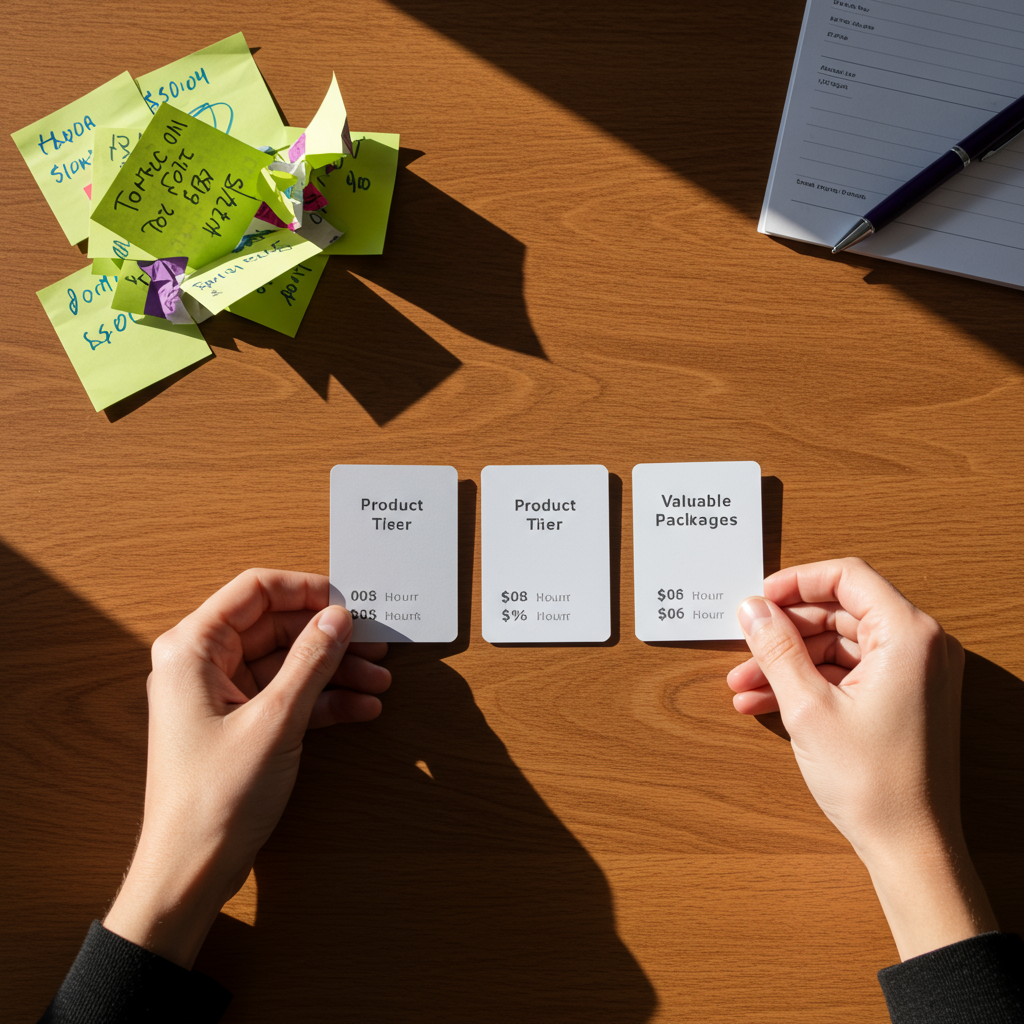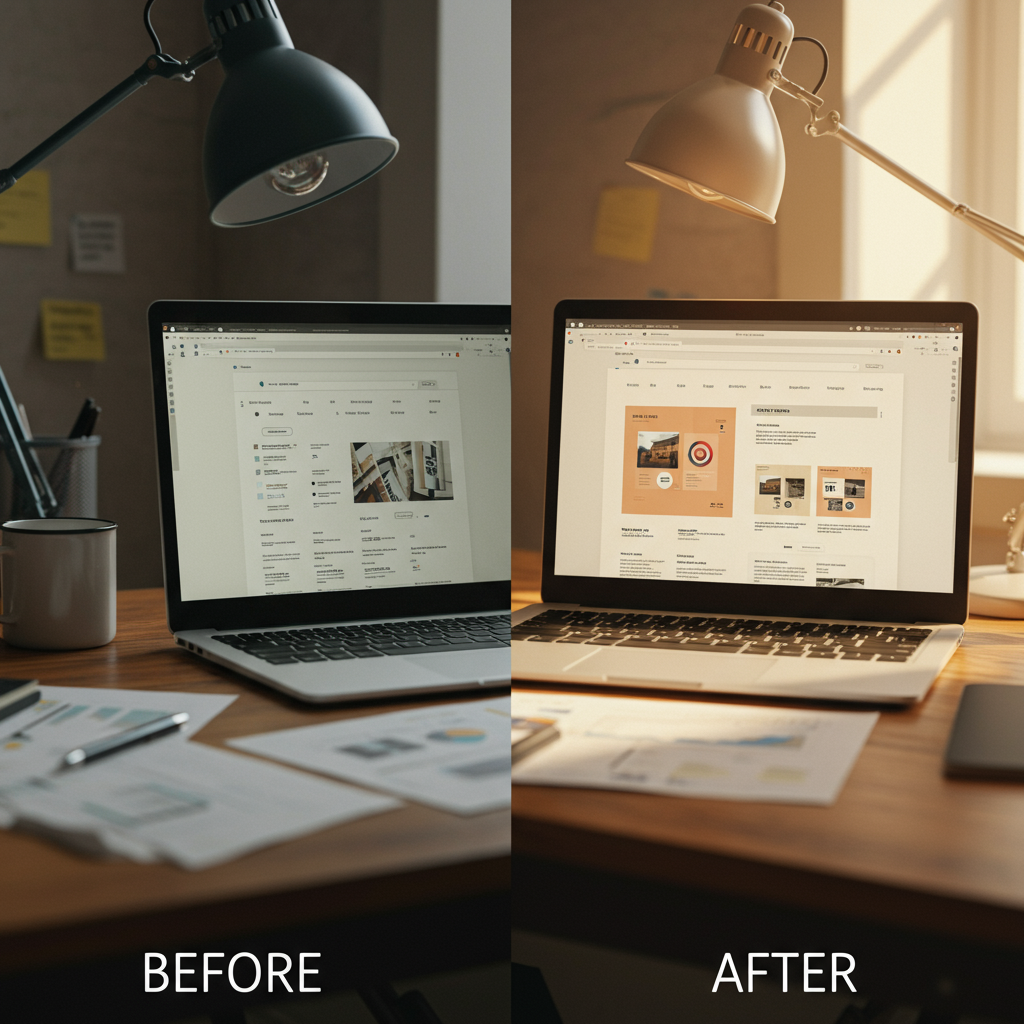Are you stuck in a cycle of writing custom proposals for every potential client, only to haggle over scope and get ghosted? It’s a frustrating loop that keeps you from doing your best work and makes your income feel like a rollercoaster. It’s time to stop selling your hours and start selling predictable, high-value outcomes. This guide will show you how to build a productized service page that acts as your 24/7 sales machine.
Key Takeaways
- Shift from Services to Products: Learn why packaging your expertise into defined "products" is the key to scaling your freelance business and escaping the "time for money" trap.
- Price for Value, Not Time: Ditch the hourly rate for good. We’ll show you how to price your packages based on the tangible results you deliver for the client.
- Build a Sales Asset: Your new services page won't be a simple brochure; it will be a high-converting landing page designed to attract, educate, and convert ideal clients.
- The S.C.O.P.E. Framework: Get a step-by-step checklist to define, structure, and sell your productized service effectively.
The Freelancer's Dilemma: Trapped Trading Time for Money
For most freelancers, the default business model is simple: you trade one hour of your time for a certain amount of money. But this model has a hard ceiling—you only have so many hours in a day. It also creates a constant pressure to find the next project, a challenge that 47% of independent professionals say is their biggest hurdle.
Why Your Generic "Services" Page Isn't Getting You Clients
Most service pages are passive and vague. They list skills like "Web Development" or "Content Writing" and end with a weak "Contact me for a quote." This puts all the work on the potential client to figure out what they need and if you’re a fit. It invites haggling, scope creep, and low-quality leads looking for the cheapest option.
The Shift: Selling Predictable Outcomes, Not Billable Hours
A productized service is a specific, pre-scoped solution to a recurring client problem, sold at a set price. It transforms your expertise from a vague service into a tangible product. This shift doesn’t just change your pricing; it changes the entire client conversation from "How much do you cost per hour?" to "Which of these solutions is right for me?"

Introducing the S.C.O.P.E. Framework for Building Your Sales Machine
To build a page that sells, you need a system. The S.C.O.P.E. framework organizes your thinking and ensures your page has every element it needs to convert visitors into clients.
Step 1: Select a Repeatable, High-Value Problem
Don't try to productize everything you do. Audit your past projects. Where did you provide the most value? What's a painful, recurring problem your ideal clients face? Pick one. For a web designer, it might not be "building websites," but "launching a marketing site for a new startup in under 3 weeks." That specificity is key.
Step 2: Containerize Your Solution into Clear Tiers
Package your solution into 2-3 distinct tiers (e.g., Starter, Pro, Premium). This psychological pricing strategy, known as "Good, Better, Best," helps guide buyers and makes the value of each level clear. It moves the decision from "Should I hire you?" to "Which package should I choose?"
Step 3: Outline the Deliverables and Quantify the Value
Be ruthlessly specific. Don't just say "SEO optimization." Say "On-page SEO for up to 5 core pages, including keyword research, meta descriptions, and image alt-tags." List every single thing the client gets. This builds trust and justifies your price. A clear services page leaves no room for ambiguity.
Here’s a micro-transformation:
- Before: "Content Writing: I write blog posts, articles, and website copy. Rate is $75/hour."
- After: "The 'Content Engine' Kit: 4 SEO-optimized 1,500-word articles with images and social snippets. Monthly retainer of $2,200."
Step 4: Price the Outcome (And Ditch the Hourly Rate for Good)
Calculate your price based on the value and result you provide, not the hours it takes you. A $5,000 website that helps a client land a $50,000 customer is an incredible return on investment. Anchor your pricing in that value. Fixed prices mean no surprises for the client and predictable revenue for you.
Step 5: Exhibit Proof with Testimonials, Case Studies, and Guarantees
Your claims need backup. A high-converting page is packed with social proof. Include client testimonials with headshots, logos of companies you’ve worked with, and short case studies or links to your portfolio. A clear satisfaction guarantee can also dramatically reduce purchasing friction.
Ready to Package Your Expertise?
Stop guessing and start building. Use our free Services Page builder to draft your first productized offering right now. Follow the S.C.O.P.E. framework as you go and create a page that sells for you.
Deconstructing a High-Converting Productized Service Page
Let’s make this concrete. Visualizing the change from a generic brochure to a targeted sales page is the best way to see the power of this model.

Before: The "Contact Me for a Quote" Brochure
A typical page might say: "Web Development Services: Specializing in PHP, React, and custom solutions. I help businesses build a strong online presence. Contact me for a custom quote." It's vague, developer-focused, and puts all the work on the lead.
After: The "Founder's MVP Package" Sales Page
The productized version is entirely different: "The Founder's MVP Package: Your complete 3-page marketing site, launched in 14 days for a fixed price of $5,000." It then clearly lists deliverables: discovery workshop, custom Webflow design, mobile optimization, basic SEO setup, and 1 week of post-launch support. It includes testimonials from other founders and a clear "Book a Kickoff Call" button. It sells a complete solution, not a list of skills.
The Result: Fewer Proposals, Better Clients, and Predictable Income
When you successfully productize, the benefits ripple through your entire business. You spend less time writing proposals and more time doing the work you love. You attract serious clients who understand the value you provide because you’ve laid it out for them. Most importantly, your income becomes more stable and predictable, allowing you to plan for the future instead of worrying about the next project.
Frequently Asked Questions
What is a good example of a productized service?
A great example is a "Podcast Launch Kit." Instead of offering "audio editing" by the hour, a producer could sell a fixed-price package that includes editing the first 3 episodes, creating intro/outro music, writing show notes, and setting up hosting. The client buys a single, complete solution.
How do I price my first productized service package?
A good rule of thumb is to estimate the hours it would take you, multiply by your ideal hourly rate, and then add a 20-30% premium for the value, clarity, and convenience you are providing. Price it as a flat fee, not a range.
Can you productize a consulting or strategy service?
Absolutely. Instead of open-ended consulting, offer a "90-Day Marketing Strategy Sprint" or a "Brand Messaging Audit." These are time-bound, deliverable-focused packages that turn abstract advice into a tangible product.
What's the biggest mistake freelancers make when creating a service page?
The biggest mistake is making it all about themselves—listing their skills, their tools, their experience. A great professional page focuses entirely on the client: their problems, their desired outcomes, and the specific solution you provide to get them there.
How many packages or tiers should I offer?
Three is the ideal number for most businesses. It creates a psychological anchor, making the middle option often seem like the best value. Offering more than three can lead to decision paralysis for the client.
Your Next Steps to a Scalable Business
Thinking about this is one thing; taking action is another. It’s time to move from being a service provider to a business owner.
- Identify Your First Product: Spend 30 minutes right now reviewing your last five projects. Find the most common, repeatable problem you solved. That’s your candidate.
- Draft Your Package with S.C.O.P.E.: Grab a notebook and map out your service using the five steps: Select, Containerize, Outline, Price, and Exhibit.
- Build Your Sales Page: Don't wait for perfection. Create your high-converting landing page with a clear title, package details, and a strong call to action.
Stop bidding, start selling. Turn your expertise into a product that sells itself, and build the freelance business you actually want.